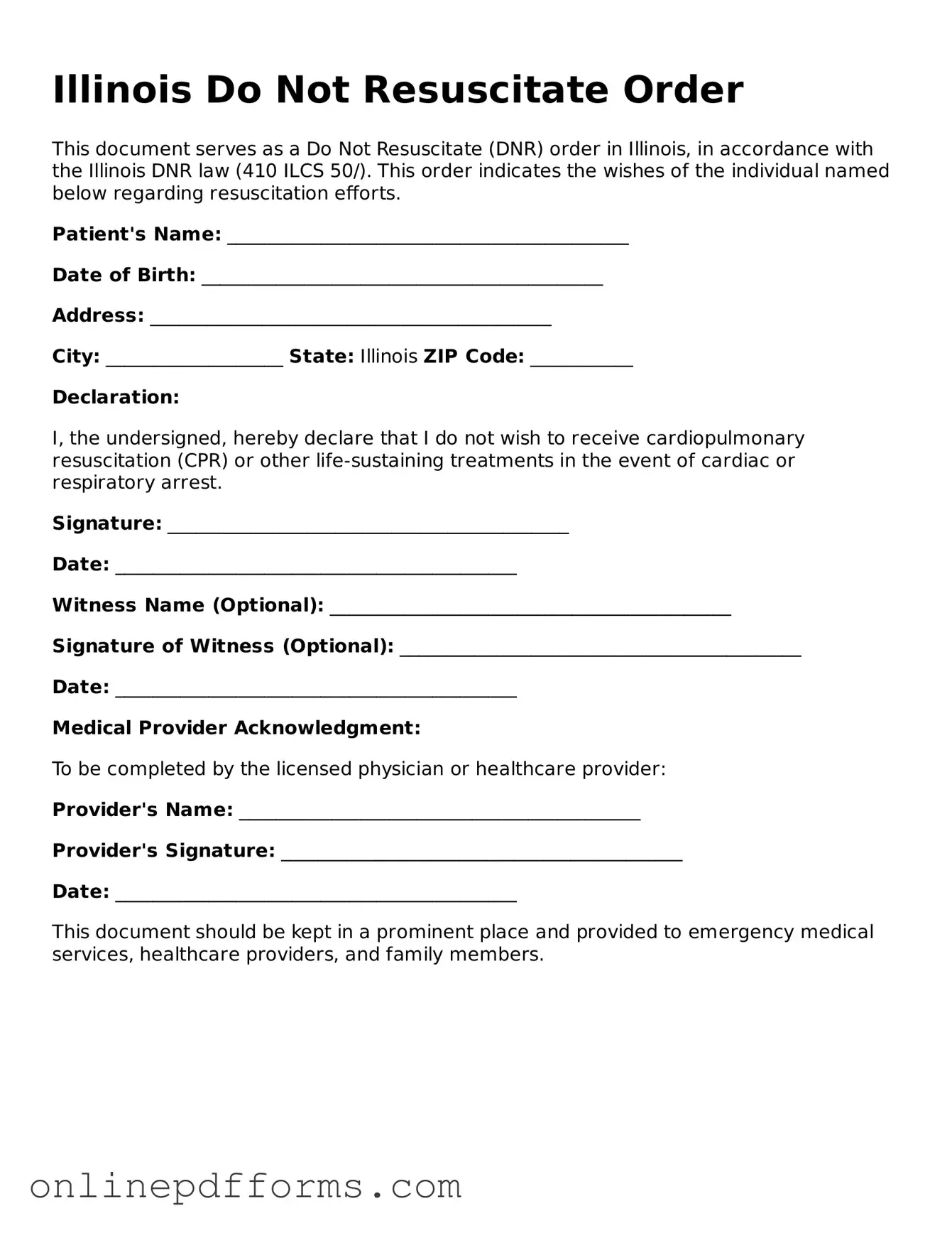The Illinois Do Not Resuscitate (DNR) Order form shares similarities with the Advance Directive. An Advance Directive is a legal document that outlines a person's wishes regarding medical treatment in situations where they cannot communicate those wishes themselves. Like the DNR, it allows individuals to express their preferences about life-sustaining treatments and interventions, ensuring that their choices are respected even when they are unable to speak for themselves.
Another document comparable to the DNR Order is the Living Will. A Living Will specifically details the types of medical treatment a person desires or wishes to avoid at the end of life. It serves a similar purpose as the DNR by guiding healthcare providers on the patient’s wishes concerning life-sustaining measures, thus ensuring that their end-of-life preferences are honored.
In addition to the aforementioned documents, it is important to have a clear understanding of the legal aspects involved in vehicle transactions. For instance, the Auto Bill of Sale Forms play a significant role in documenting the sale of a vehicle, similarly ensuring that the agreements between the buyer and seller are formally recognized and respected in legal terms.
The Medical Power of Attorney is also akin to the DNR Order. This document designates a trusted individual to make healthcare decisions on behalf of the person if they become incapacitated. While the DNR focuses on resuscitation efforts, the Medical Power of Attorney encompasses broader medical decisions, allowing the appointed agent to ensure that the individual’s healthcare preferences, including DNR wishes, are followed.
Another relevant document is the Physician Orders for Life-Sustaining Treatment (POLST). POLST is a medical order that translates a patient’s preferences regarding life-sustaining treatments into actionable medical orders. Like the DNR, it is intended for individuals with serious illnesses and provides clear instructions to healthcare providers about the patient’s treatment preferences, ensuring their wishes are carried out in emergencies.
The Do Not Intubate (DNI) Order is similar to the DNR Order in that it specifically addresses a person's wishes regarding intubation and mechanical ventilation. While the DNR focuses on resuscitation efforts, the DNI allows individuals to refuse the use of a breathing tube in case of respiratory failure, ensuring that their preferences for comfort and care are respected during critical medical situations.
The Comfort Care Order is another document that aligns with the DNR. This order emphasizes the provision of comfort measures rather than aggressive treatments. It prioritizes palliative care, focusing on relieving pain and discomfort without attempting to prolong life through invasive medical interventions, thus reflecting a similar philosophy to the DNR regarding end-of-life care.
The Healthcare Proxy is also comparable to the DNR Order. This document allows individuals to appoint someone to make healthcare decisions on their behalf if they are unable to do so. While the DNR specifies preferences about resuscitation, the Healthcare Proxy ensures that the appointed individual can advocate for the person’s overall medical wishes, including their stance on resuscitation efforts.
The End-of-Life Care Plan is a comprehensive document that outlines a person's wishes regarding their care as they approach the end of life. Similar to the DNR Order, it includes preferences for medical treatments, palliative care, and other considerations that reflect the individual’s values and desires for their final days, ensuring that their choices are honored by healthcare providers.
Lastly, the Hospice Care Agreement is similar in its focus on end-of-life care. This agreement outlines the terms and conditions of receiving hospice services, which prioritize comfort and quality of life rather than curative treatments. Like the DNR Order, it reflects a commitment to honoring the patient’s wishes during their final stages of life, emphasizing dignity and respect in their care.
